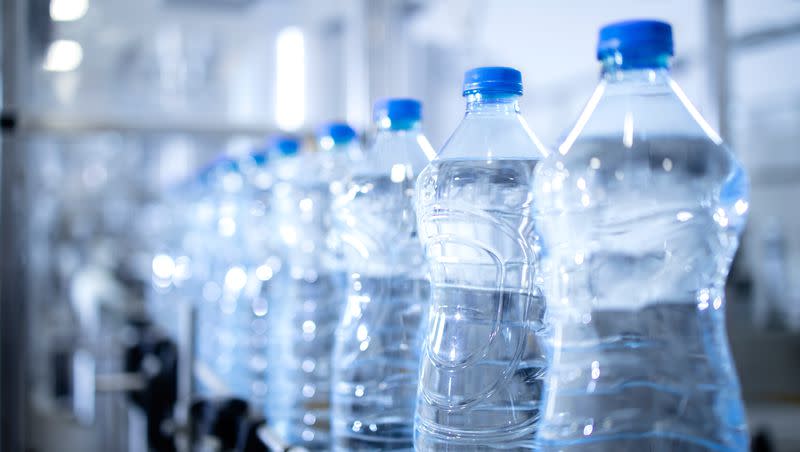You eat, drink and breathe plastic. Can we stop?

Think of all the items that contain plastic. Maybe it’s a car, a water bottle or your phone. But did you think about the food you’ve eaten, the water you’re drinking or the air you breathe?
You might be ingesting 22,043,000 to 22,146,000 small plastic particles a year in total, per National Geographic and the Center for International Environmental Law. Here’s what you should know.
Where do we ingest plastic?
While eating
We may be eating 39,000 to 52,000 microplastic particles a year. In general, microplastics in food represent about 15% of the calories consumed by the average person, according to National Geographic.
In a study published in the journal Current Environmental Health Reports, microplastics were found in over 800 animal species, with higher toxicity levels in fish and shellfish. The Food and Drug Administration, however, does limit toxins, including microplastics, for fish and shellfish before consumption.
While drinking
Individuals who meet their daily recommended water intake drink 4,000 microplastics annually. However, if they only drink bottled water, the number is said to rise by another 90,000 particles, per National Geographic.
Hundreds of thousands of microplastics are also released when a plastic container is heated up. This includes anything from noodle cups to baby bottles, according to NPR.
Related
By just breathing
Every hour, people inhale about 16.2 particles of plastic, per a study published in Physics of Fluids.
According to the Center for International Environmental Law, annually, the number might be around 22,000,000 particles of plastics.
Is this toxic?
In the same study published by Current Environmental Health Reports about microplastics in fish and shellfish, researchers found that eating too much seafood with microplastics could harm the immune system and disrupt gut balance.
Kieran Cox, co-author of a separate study on microplastics, explained to National Geographic that, similar to air pollution or hazardous construction materials, individuals with greater exposure or preexisting conditions may have a reduced capacity to withstand plastic ingestion. Scientists, however, are working to understand the threshold at which microplastics begin to exhibit discernible health impacts.
How do we stop?
The truth is, you can’t. People intake microplastics through various pathways. They may ingest them when consuming seafood, inhale them from the air or consume food containing trace amounts of plastic packaging, per National Geographic.
Here are some suggestions to limit the intake of microplastics. from The Seattle Times, Eco Watch and Consumer Reports:
Avoid plastic food containers.
Drink tap water and not bottled water.
Do not heat food in plastic.
Eat foods fresh instead of those found wrapped or canned.
Limit consumption of seafood.
Try plastic-free cosmetics and beauty products.
Use laundry balls, a fiber-catching filter or air-dry clothes to reduce microplastics in clothes you wear.
Vacuum regularly to minimize microplastics found in the home.
Work with your community to limit the use of single-use plastics and production.
While talking to NPR about plastic ingestion, David Love, an associate scientist at the John Hopkins Center for a Livable Future, said to not worry too much. “We’re probably excreting most of the microplastics that we ingest.”
